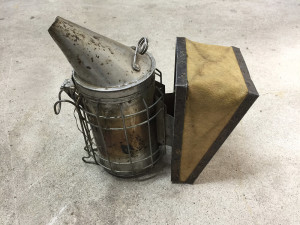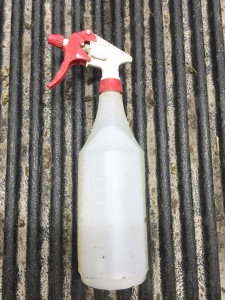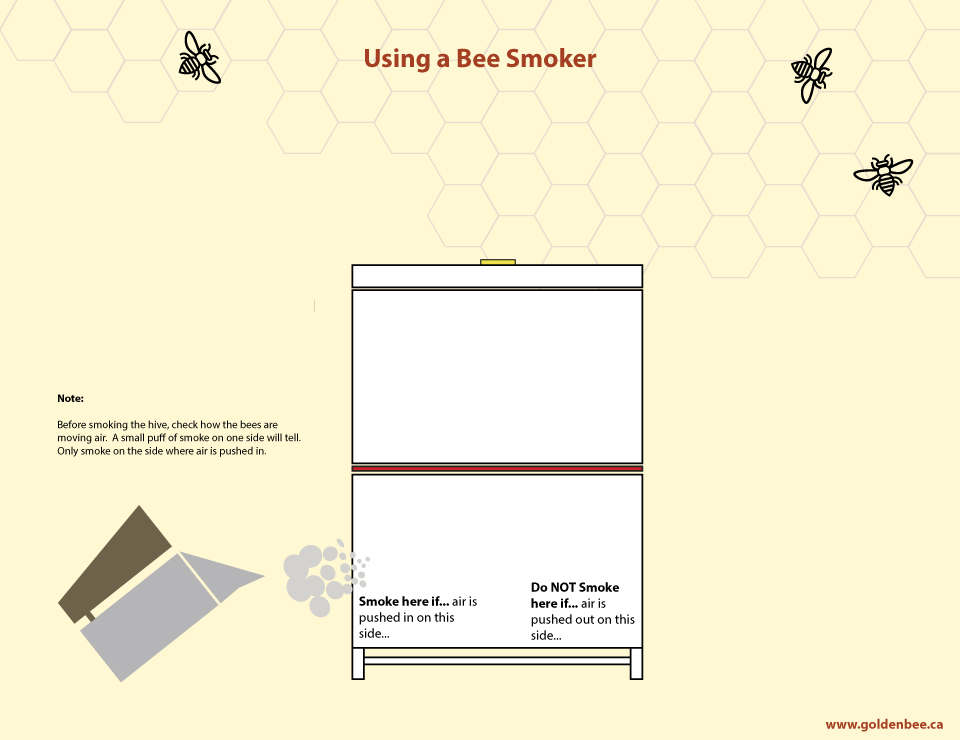The Bee Smoker
Why Smoke Bees?

When you do a hive inspections, you might consider smoking the bees. Smoke masks the alarm pheromones from the guard bees enabling the beekeeper to inspect the bees without aggressive defense from the bees (aka stinging). When you smoke bees, they will act like there’s a fire close by and start gorging themselves with honey and ignore your presence.
How to Smoke Bees
When you smoke bees, always smoke from up wind so the smoke will naturally waft over the frames. You will need much less smoke if you use this technique. Be careful not to over smoke because you can hinder the queens laying ability for a period of time and bees will consume too much honey. Smoke just enough so you can work comfortably and don’t get too close to the bees when smoking. You can stay 12 inches away from the bees and your smoke will cover a larger area. If you notice the bees are looking up at you, a single puff will get them distracted and you can continue to work without bees bouncing off your veil.
Bee Smoke Alternative

Until you take off honey, you can inspect hives using a smoke alternative. You can make a mixture of essential oils and 1:1 sugarwater and simply spray the bees with a regular spray dispenser. Simply spray the frames as you remove them from the hive. This will create a calming effect and the bees will stop to drink/clean the bees around them allowing you to continue to work the bees. I love working hives this way because it smells really good. The blend contains a mix of lemongrass, spearmint and tea tree oils which is very healthy for the bees; a win/win situation.
Honey Bee Healthy and Bee Pro are also products we use but they are quite expensive with a price point around $140 per gallon. A homemade recipe can be made for a fraction of the cost and works just as good based on my experience.
What Smoker to Buy?
There are many different smokers available from different companies. Most of them work just fine and it’s just beekeeper preference as to which one you use. There are larger smokers available; they’re handy when you’re working bees for a long period of time. I use the smaller Dadant bee smoker and it’s lasted for many years. Due to its smaller size, it needs to be relit when we work the bees for a long period of time.
Some smoker has plastic baffles. I do not recommend those as several beekeepers have told me they melted the baffles when transporting them. The Dadant uses leather and will last for many years with proper use. Most smokers will work just fine as they are all designed to work.
Smoking Fuel
Many different sources of fuel can be used. You want a fuel that will burn slowly and give off a cool white smoke. Start by lighting the fuel on the bottom and puff the smoker so you have a fair amount of smoke coming out the top before adding all the fuel you require. When you have enough smoke, close the lid and continue puffing until a cool white smoke is emitted.
Some fuel will go out when it’s not puffed for an extended period of time. This can be avoided by ensuring your fuel is properly lit.
Here are come common bee smoker fuels:
- Hay or dry grass
- Dried leaves
- Wood Shavings
- Burlap (What I usually use)
- Compress wood chip pellets

Smoking Tips
- Before smoking the entrance, check to see which side of the hive is moving air into the hive and which side is pushing air out. Smoke the side where air is pushed in as shown in the diagram.
- Always be aware of the wind direction and smoke up wind so the smoke drifts over the hive naturally.
- Never stand in front of the entrance because you will block foragers and other bees trying to return to the hive from the frames.
- Do not over-smoke the bees.